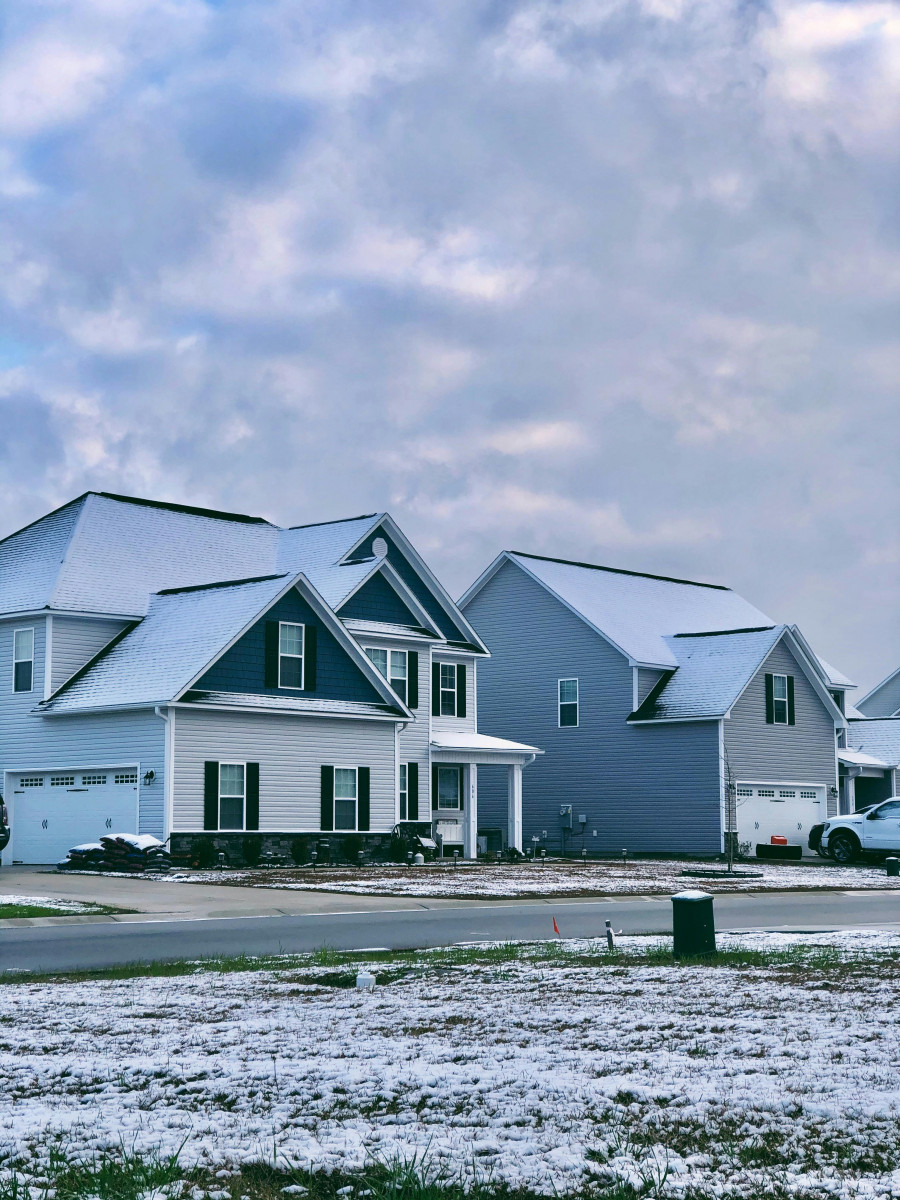
Snowy winters in the DMV area can be tough on your home, especially if you have an older roof. Preventive maintenance is key to avoiding costly repairs and keeping your home protected. Let’s take a look at how snow can impact your roof and what steps you can take to minimize damage.
How Heavy Snow Damages Your Roof
Wet, heavy snow can place significant strain on your aging roof. Here are the most common structural problems to watch out for:
- Sagging: the roof deck may start to dip under the pressure.
- Cracking: beams and trusses can develop fractures.
- Collapse: in extreme cases, too much snow can cause the roof to fail entirely.
Fast Fact: One cubic foot of wet snow can weigh up to 20 pounds. For an older roof, that’s like adding thousands of pounds overnight!
Why Ice Dams Are a Bigger Problem Than You Think
Ice dams form when melting snow refreezes at the edges of your roof, blocking water from draining properly. This can cause:
- Leaks: water backs up under shingles and into your home.
- Shingle Damage: ice damages and weakens the roofing materials.
- Gutter Issues: heavy ice can bend or break gutters.
A roof with worn-out shingles or flashing is especially prone to water problems, so it’s important to address these issues early.
The Freeze-Thaw Effect on Your Roof
When snow melts during the day and refreezes at night, it can create more issues for older roofs:
- Cracked Shingles: water that seeps into cracks expands when it freezes, making the cracks worse.
- Damaged Flashing: repeated freezing and thawing can loosen flashing around vents, chimneys, and skylights.
- Granule Loss: asphalt shingles lose their protective granules over time, making them more susceptible to damage.
Lingering Moisture: A Hidden Threat
Snow that lingers on a roof keeps it wet for extended periods, which can lead to:
- Rot: roof decking and support structures can weaken from prolonged moisture.
- Mold: damp conditions create an environment for mold growth, which can spread to your attic.
- Interior Leaks: water damage from snow can affect ceilings, walls, and insulation inside your home.
Snow and Your Energy Bills
An aging roof with poor insulation or ventilation lets heat escape, causing snow to melt unevenly. This not only increases your energy bills but also contributes to ice dams and further damage. Proper maintenance can save you money and keep your home more energy efficient.
6 Steps to Protect Your Roof This Winter
Here are some steps you can take to keep your roof in good shape during winter:
- Remove Excess Snow: use a roof rake to clear snow, especially near edges and low slopes. Don’t climb on the roof yourself—leave that to professionals.
- Insulate Your Attic: good insulation reduces heat loss, preventing snow from melting unevenly.
- Improve Ventilation: proper ventilation helps regulate the temperature in your attic and minimizes ice dam formation.
- Inspect Your Roof: look for missing shingles, cracks, or sagging areas before and after winter storms.
- Fix Small Problems: address leaks, loose flashing, or damaged shingles as soon as you notice them.
- Call the Pros: for major snow removal or repairs, trust EHSMD—your local roofing experts with extensive winter experience.
When to Replace an Aging Roof
If your roof is at the end of its lifespan or showing significant wear, replacing it before winter conditions worsen can save you from unexpected damage and costly repairs. Modern roofing materials are designed to handle harsh weather more effectively than older systems, giving you peace of mind for the rest of the season.
Contact Us for Peace of Mind
Don’t wait for small problems to turn into costly repairs. Contact us today for a free roof inspection or snow removal services. Our expert team is ready to help you protect your home and keep your family safe this winter.
